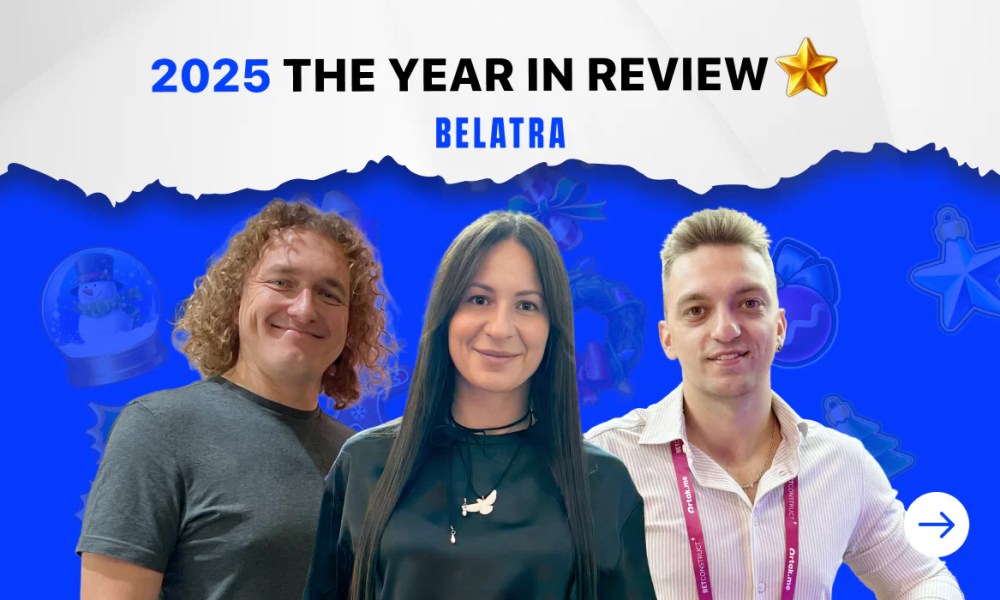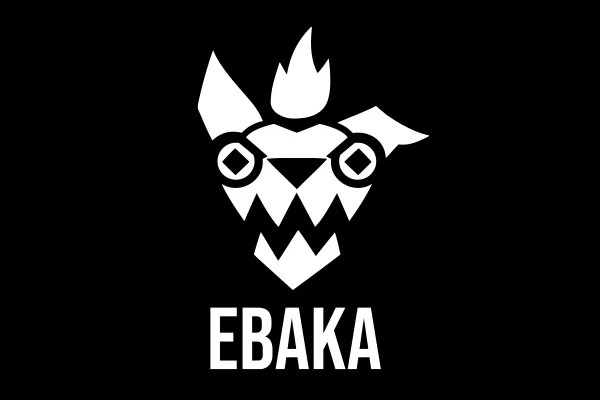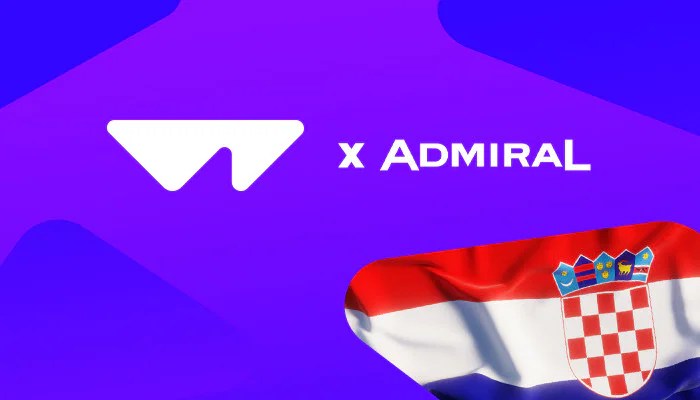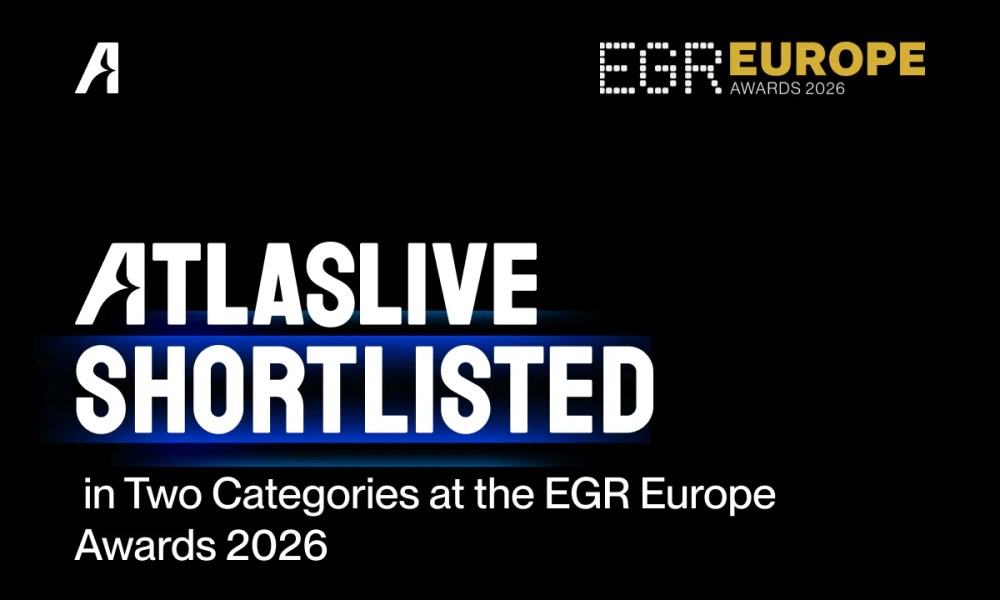Latest News
HOW AUTOMATION WORKS FOR SPORTS BETTING PROMOTIONS? THE SMARTICO METHOD
 Reading Time: 4 minutes
Reading Time: 4 minutes
Pass it to Maradona! It was an incredibly successful football strategy in the 1980s. Sometimes, even the God apparently lent a hand to the strategy’s success!
Similarly, ‘pass it to the machine’ must be an equally fruitful marketing strategy of our times. It basically means to automate the whole customer relationship management (CRM) process.
But how do you actually pass it to the machine?
Well, here is how it works. If you are not quite well-versed with the CRM and marketing activities, first let us quickly have a run down on how the marketing process works in a betting company’s CRM division. Then we will see how it is automated with Smartico’s platform.
A word about the platform before we begin. It has three major parts:
- Real time marketing application
- Gamification tool
- Real time business intelligence (BI) module
Sportsbook Operator’s Conventional Promotional Method
The CRM division of every major Sportsbook works super efficiently to attract maximum players to punt on the games that they promote.
Let’s take a look at how the CRM division works before a major game of European football. The CRM division sends all sorts of promotions and intimations to players in their databases.
Promotions can be in the form of any format, mainly the following:
- Emails
- SMS on their phones
- Messages on their social media feeds like Facebook or Twitter timeline
- Push notifications to the app users
- Pop-ups on the website
The operators have to get the text needed for emails and message notifications, videos and graphics for social media promotion for each game separately and schedule their sending on appropriate timings on CRM software.
Then there are the categories of players, or buckets as they are sometimes called. For example,
- one bucket of regular, loyal customers,
- another comprising occasional customers,
- yet another having only newly joined customers,
- another bucket comprising dormant customers and so on.
For each bucket, the promotional feature has to be customized. That is, different versions of emails, social media graphics and messages are ideally required for each category of players. Some clusters of customers will also need some kind of bonuses or offers to spur them into punt for this game. So the CRM operators have to add information about such bonuses manually too.
As you can see, it involves cumbersome manual work and there is a good chance that the intended message still may not reach the right player.
Automation can make the process easy and ensure that each player receives exactly the right kind of messages and intimations.
Inside the Automation Process with Smartico
Smartico’s three-pronged software application makes life easy for CRM operators.
The operators need to get the various kinds of creatives done as previously – text, graphics, video and all that. They have to create at least one template for each mode of communication too: for email, SMS push notification, social media posts and so on.
That’s all. The software will take care of the rest.
It uses special dynamic tags to deliver the right kind of content about the right match to the right players through the right channel by leveraging the real time BI module that churns live player data.
The CRM operators can select the games from a list of upcoming games across leagues that they want to promote. The software will initiate an automated marketing campaign at a scheduled time before each match.
One of the software’s most useful features is the Campaign flow builder, which allows the operators to create the flow and order of sending various modes of communication. For example, first send emails, then push notifications or SMS, then social media promotions and and finally show a popup when the player logs in to the website or app of the sportsbook.
Each of the communication will contain two kinds of creatives:
- Fixed
- Dynamic
Fixed communication will be the text, graphics and video that are intended to persuade the players to sign in and place bets.
Dynamic communication refers to the text and graphics that provide the information that keeps on changing from match to match: such as the names of the competing teams, the league, stadium, date and time of the match and such like. If the communication offers bonuses or special offers, the text and graphics depicting the bonus or offer are also will be part of the dynamic communication.
The software will automatically populate the dynamic elements in each communication based on the real time data of player behavior data and preferences. For this the software makes use of something called dynamic tags.
To sum up, the work flow of the operator changes as follows:
- Create the templates of email, messages, graphics and videos
- Choose the matches that need to be promoted
- Select with the targeted population of customers (That is, the operator can opt for promoting Bundesliga matches just to the players who routinely bet on Bundesliga matches only)
- Set the starting time for the campaign – how many day, weeks or even months before the match (even if matches are postponed or get cancelled for some reason, the software will alter the communication schedule accordingly)
- Insert bonus offers, wherever needed.
- Pick the order of communication modes through Campaign flow builder
- Sit back and watch the results
This way, the operators can think about improving the overall quality of the marketing campaigns and look for innovations, rather than running hurriedly to tick each boxes of the communication mix.
The software saves time, delivers better results and better streamlines the operations.
So, pass it to the machine!

Latest News
From ‘Mummyverse’ to Crash Games: Belatra Reviews a Landmark 2025
Editor’s Take
Why this matters: Belatra has been a steady hand in the slots world for a long time, but 2025 marked a distinct shift in strategy. By entering the Crash vertical with Goose Boom Bang and winning big at SiGMA Africa, the studio is clearly pivoting to capture the high-growth, high-frequency players in emerging markets. They are no longer just a “classic slots” developer; they are diversifying the portfolio to ensure relevance in regions like LatAm and Africa.
The Full Story
Belatra Games, the specialist online slots developer, has issued a strategic review of its 2025 operations, celebrating a 12-month period defined by entry into new game verticals, significant franchise expansion, and high-profile industry recognition.
The year was characterized by a dual strategy: deepening engagement in established markets while aggressively expanding its content portfolio to suit local preferences in emerging territories.
Portfolio Evolution: Crash and Battles 2025 saw Belatra move beyond its traditional slot roots. The company made its debut in the high-demand Crash game vertical with the launch of Goose Boom Bang, a title designed to tap into the fast-paced gameplay preference of younger demographics.
Additionally, the studio introduced a fresh game concept with the launch of Battles, a new format unveiled for the first time in 2025, with further development planned for 2026.
The ‘Mummyverse’ Expands For fans of classic slots, the highlight of the year was the aggressive expansion of the Mummyverse. Belatra nearly doubled the size of this franchise over the year, making it the most extensive game universe in their entire catalog.
The developer also focused on B2B localization, releasing a number of exclusive bespoke games created specifically for selected operator partners to meet specific local market tastes.
Awards and Recognition The company’s strategic shifts were validated by industry accolades. Belatra secured over 30 nominations throughout the year, with standout wins including:
-
Best Slot Provider (awarded by BitStarz).
-
Most Played Game of 2025 for Make It Gold at the SiGMA Africa Awards.
-
Player’s Pick Award.
Management Commentary Misha Voinich, Head of Business Development at Belatra, commented on the studio’s momentum:
“This year has truly defined who we are as a studio – ambitious, creative and focused on building long-term partnerships. We’ve expanded our universes, launched new ones and entered exciting new markets that will all help us carry this momentum into the New Year.”
The post From ‘Mummyverse’ to Crash Games: Belatra Reviews a Landmark 2025 appeared first on Gaming and Gambling Industry Newsroom.
Latest News
‘Chaos and Soul’: Ebaka Games Plots Global Expansion After Viral Launch
Editor’s Take
Why this matters: The “Instant Game” vertical (Crash, Plinko, Mines) is becoming crowded, but Ebaka Games is cutting through the noise with a distinct brand personality. By securing BMM Testlabs certification so quickly after launch, they are signaling to Tier 1 operators that despite their “chaotic” marketing vibe, the math underneath is solid and compliant. The backing of industry veteran Dmitry Belianin also adds immediate commercial credibility to the startup.
The Full Story
Ebaka Games, the fledgling studio that promises to bring “chaos and soul” to the iGaming sector, has outlined an aggressive growth strategy for 2026 following a landmark launch period in late 2025.
The studio, which officially debuted in November, reports that its initial rollout reached more than five million people worldwide. The launch saw its portfolio go live with the operator Menace, serving as the initial testbed for its mechanics and “Ebaka modes.”
The Product: Instant Games with Personality Ebaka is bypassing traditional slots to focus on the high-growth vertical of fast-paced, instant-win games. Their initial lineup includes:
-
Plinko
-
Mines
-
Tower
-
Limbo
-
Crash
Differentiation is achieved through unique mascots and signature gameplay tweaks designed to offer high win potential and distinct visual identities, moving away from the generic interfaces often found in this genre.
Regulatory Milestone Crucially for its 2026 roadmap, Ebaka Games has confirmed it has secured certification from BMM Testlabs. This accreditation validates the fairness and integrity of its RNG (Random Number Generator) and game engines, removing a major barrier to entry for regulated markets. With this certification in hand, the studio plans to launch with a number of “major brands” in the coming year.
Management Commentary Vitalii Zalievskyi, CEO of Ebaka Games, commented on the studio’s unorthodox approach:
“It’s only been a few weeks since we first introduced Ebaka Games to the world. The feedback has been breathtaking, and it vindicates the decision for us to take a different path to the rest of the industry. You don’t need huge marketing budgets to grab people’s attention if you are building something truly innovative.”
Industry Backing The studio describes itself as being “created by players for players” but boasts significant industry firepower in its corner. The team includes Dmitry Belianin, a well-known figure in the sector who is the co-founder of Blask and Menace, as well as Managing Partner at Already Media.
The post ‘Chaos and Soul’: Ebaka Games Plots Global Expansion After Viral Launch appeared first on Gaming and Gambling Industry Newsroom.
Latest News
Racing Meets Nightlife: SBK Backs ARC’s New ‘Friday Night Live’ Series
Editor’s Take
Why this matters: British racing has a well-documented demographic problem; its core audience is aging. “Friday Night Live” is a direct attempt to fix this by blending high-stakes racing with the “experience economy” (DJs, nightlife vibes) that appeals to Gen Z and Millennials. Bringing SBK on board—a mobile-first, app-only sportsbook—is a perfect demographic fit, while the Racing Post adds the necessary credibility to ensure the actual racing product remains the focus.
The Full Story
Arena Racing Company (ARC) has unveiled the strategic commercial lineup for its upcoming Friday Night Live series, confirming SBK as the Exclusive Betting Partner and The Racing Post as the Official Media Partner.
Set to launch in January 2026, Friday Night Live is a new initiative created in collaboration with youth-focused events company INVADES. The series is designed to overhaul the traditional race day experience, featuring fast-paced fixtures under floodlights, DJ sets, and significant entertainment elements sandwiched between races.
The Commercial Deal
-
SBK: As the exclusive betting partner, the Smarkets-owned sportsbook will take naming rights and on-course branding for all 35 races. Crucially, these races will be broadcast live on mainstream television via ITV Racing as well as Sky Sports Research.
-
The Racing Post: As the Official Media Partner, the publication will provide content, coverage, and promotion across its digital platforms, aiming to bridge the gap between established racing purists and the new audience ARC hopes to attract.
A High-Stakes Experiment The series is not just a marketing exercise; it carries serious sporting weight. Each of the five scheduled nights will feature over £200,000 in prize money. The fixtures will rotate across three of ARC’s all-weather tracks: Wolverhampton, Newcastle, and Southwell.
Management Commentary David Leyden Dunbar, Group Director of Commercial Strategy at ARC, was clear about the target audience:
“We have been very clear that one of the aims of Friday Night Live is to engage the next generation of racing fans… Both [partners] have shown real enthusiasm to work with us… as well as using the platform that these fixtures will offer them to also engage with more established racing and sports fans.”
Adam Baylis, Marketing Director at SBK, added:
“Friday Night Live [is] a fresh and engaging concept that brings a new energy to British racing. SBK has always been built around sport… our focus is on enhancing the live race day experience in a fun, social and responsible way.”
The 2026 Schedule The series kicks off immediately in the new year:
-
9th Jan: Wolverhampton
-
6th Feb: Newcastle
-
20th Feb: Southwell
-
20th March: Wolverhampton
-
27th March: Newcastle
The post Racing Meets Nightlife: SBK Backs ARC’s New ‘Friday Night Live’ Series appeared first on Gaming and Gambling Industry Newsroom.
-

 Latest News2 weeks ago
Latest News2 weeks agoSCCG Announces Strategic Partnership with Yellow Elephant Studios to Expand Multi-Channel Gaming Content Worldwide
-
Latest News2 months ago
JioBLAST Launches All Stars vs India powered by Campa Energy: A New Era of Creator-Driven Esports Entertainment
-
eSports1 month ago
CS:GO Betting Gains Momentum in the iGaming Sector
-
Latest News3 weeks ago
THE 2025 PUBG MOBILE GLOBAL CHAMPIONSHIP GROUP STAGE WRAPS UP WITH LAST CHANCE IN SIGHT
-
Latest News1 month ago
S8UL Esports acquires Team Elite’s Free Fire MAX roster to form S8UL Elite
-
Latest News2 months ago
RocketPlay wins Best Customer Service at European iGaming Excellence Awards
-
Latest News2 months ago
Kambi Group plc Q3 2025 Report
-
Latest News3 months ago
GGPoker Unveils Massive Weekly $100K Freeroll, Kicking Off October 18













You must be logged in to post a comment Login